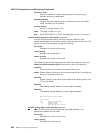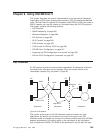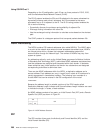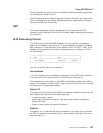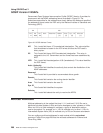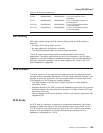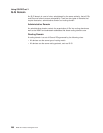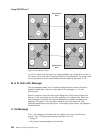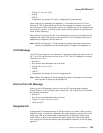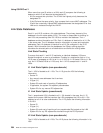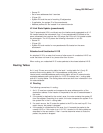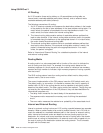
Table 59. IS-IS Multicast Addresses
Destination Ethernet 802.3 Token-Ring 802.5 Address Description
All ESs 09002B000004 C00000004000 For all end systems on the
subnetwork.
All ISs 09002B000005 C00000008000 For all intermediate systems on
the subnetwork.
All L2 ISs 0180C2000015 C00000008000 For all L2 intermediate systems
on the subnetwork.
All L1 ISs 0180C2000014 C00000008000 For all L1 intermediate systems
on the subnetwork.
OSI Routing
OSI routes packets using the IS-IS protocol. Routing with the IS-IS protocol is
based on:
v A system ID for routing within an area
v An area address for routing within a domain
v The reachable address prefix for routing outside the domain
The IS-IS protocol uses routing tables to forward packets to their correct
destinations. The routing table entries are built from information in the link state
database or from user-configured reachable addresses. The link state database is
built from information received in the link state update (LSU). Refer to the “Link
State Databases” on page 294.
IS-IS Protocol
The IS-IS protocol is a link state dynamic routing protocol that detects and learns
the best routes to reachable destinations. IS-IS can quickly perceive changes in the
topology of a domain, and after a short convergence period, calculate new routes.
To accomplish this, the IS uses the following packets:
v Link State Updates (LSU) that the IS uses to keep the link state database
information current.
v Sequence Number PDU (SNP) to keep the database synchronized and to ensure
that each adjacent IS knows what the most recent Link State Packet (LSP) from
each other router was.
v Hello messages that ISs use to discover, initialize, and maintain adjacencies with
neighboring ISs.
IS-IS Areas
An IS-IS area is a collection of systems on contiguous subnetworks. Each area’s
topology is hidden from those of the other areas to reduce routing traffic. A level 1
(L1) IS is used to route within an area. A level 2 (L2) IS is used to route between
areas or over the backbone. An IS that routes within an area and over the
backbone is considered an L1/L2 IS.
Using OSI/DECnet V
Chapter 9. Using OSI/DECnet V 289




